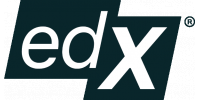- From www.edx.org
Fundamentals of Neuroscience, Part 1: The Electrical Properties of the Neuron

- Self-paced
- Free Access
- Fee-based Certificate
- 5 Sequences
- Introductive Level
Course details
Syllabus
Lesson1: The Resting Potential
The nervous system functions by sending electrical signals between neurons. To begin our study of the nervous system, we will focus on a single neuron 'at rest,' which has an electrical potential across its membrane. We will understand the ionic basis underlying this electrical potential, and how to calculate it ourselves.
Lesson 2: Passive Membrane Properties
Electrical signals between neurons can be sent through changes in their membrane potentials. In order to more deeply understand these electrical signals, we will first study the electrical properties of the neuron itself. We will examine the resistive and capacitive properties of the neuron, how these properties arise from biological factors, and how these properties influence how a neuron responds to electrical signals.
Lesson3: Action Potentials
In this lesson we will investigate one of the fundamental ways that neurons send electrical signals, through an all-or-nothing process called the action potential. The action potential is generated by the precise opening and closing of voltage-gated channels that cause specific changes to the neuron's membrane potential. We'll develop an in-depth understanding of the mechanisms of these channels and the ionic currents behind the action potential.
Lesson 4: Action Potential Propagation
Neurons send electrical signals through action potentials moving down their axons. In order to further develop our understanding of the way neurons generate and send electrical signals, we will integrate our knowledge of the electrical properties of the neuron and the action potential itself. This will allos us to understand how the nervous system has solved the problem of fast and reliable communication.
Lesson 5: DIY Labs
Seeing or measuring something with your own hands is often the best way to learn! We've spent a lot of time discussing the electrical properties of neurons, and along the way you've seen many different demonstrations. You can perform some of these experiments, as well as others we haven't shown yet, yourself, using an inexpensive piece of equipment known as a SpikerBox.
Prerequisite
Some familiarity witharithmetic, basic algebra, and working with equations.
Instructors
David Cox
Assistant Professor of Molecular and Cellular Biology, and Computer Science
Harvard University
Editor
Harvard University is a private Ivy League research university in Cambridge, Massachusetts. Established in 1636 and named for its first benefactor clergyman John Harvard, Harvard is the United States' oldest institution of higher learning, and its history, influence, and wealth have made it one of the world's most prestigious universities. The Harvard Corporation is its first chartered corporation. Although never formally affiliated with any denomination, the early College primarily trained Congregational and Unitarian clergy. Its curriculum and student body were gradually secularized during the 18th century, and by the 19th century, Harvard had emerged as the central cultural establishment among Boston elites. Following the American Civil War, President Charles W. Eliot's long tenure (1869–1909) transformed the college and affiliated professional schools into a modern research university; Harvard was a founding member of the Association of American Universities in 1900. A. Lawrence Lowell, who followed Eliot, further reformed the undergraduate curriculum and undertook aggressive expansion of Harvard's land holdings and physical plant. James Bryant Conant led the university through the Great Depression and World War II and began to reform the curriculum and liberalize admissions after the war. The undergraduate college became coeducational after its 1977 merger with Radcliffe College.
The university is organized into eleven separate academic units—ten faculties and the Radcliffe Institute for Advanced Study—with campuses throughout the Boston metropolitan area: its 209-acre (85 ha) main campus is centered on Harvard Yard in Cambridge, approximately 3 miles (5 km) northwest of Boston; the business school and athletics facilities, including Harvard Stadium, are located across the Charles River in the Allston neighborhood of Boston and the medical, dental, and public health schools are in the Longwood Medical Area. The endowment of Harvard's is worth $37.1 billion, making it the largest of any academic institution.
Harvard is a large, highly residential research university. The nominal cost of attendance is high, but the university's large endowment allows it to offer generous financial aid packages. The Harvard Library is the world's largest academic and private library system, comprising 79 individual libraries holding over 18 million items. The University is cited as one of the world's top tertiary institutions by various organizations.
Harvard's alumni include eight U.S. presidents, several foreign heads of state, 62 living billionaires, 359 Rhodes Scholars, and 242 Marshall Scholars. To date, some 157 Nobel laureates, 18 Fields Medalists, and 14 Turing Award winners have been affiliated as students, faculty, or staff. In addition, Harvard students and alumni have won 10 Academy Awards, 48 Pulitzer Prizes, and 108 Olympic medals (46 gold, 41 silver and 21 bronze).

Platform
Harvard University, the Massachusetts Institute of Technology, and the University of California, Berkeley, are just some of the schools that you have at your fingertips with EdX. Through massive open online courses (MOOCs) from the world's best universities, you can develop your knowledge in literature, math, history, food and nutrition, and more. These online classes are taught by highly-regarded experts in the field. If you take a class on computer science through Harvard, you may be taught by David J. Malan, a senior lecturer on computer science at Harvard University for the School of Engineering and Applied Sciences. But there's not just one professor - you have access to the entire teaching staff, allowing you to receive feedback on assignments straight from the experts. Pursue a Verified Certificate to document your achievements and use your coursework for job and school applications, promotions, and more. EdX also works with top universities to conduct research, allowing them to learn more about learning. Using their findings, edX is able to provide students with the best and most effective courses, constantly enhancing the student experience.

